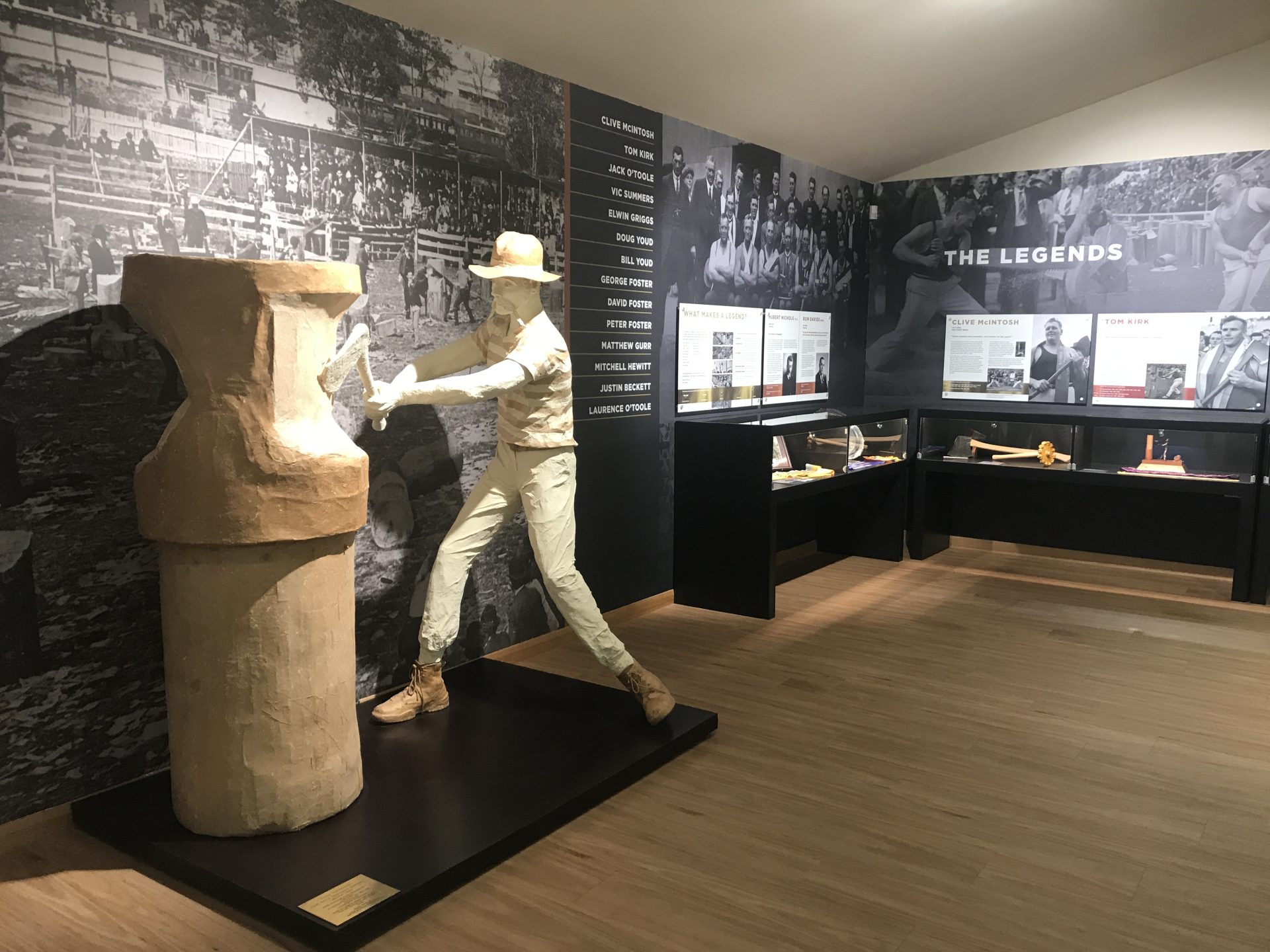
Australian Axeman’s Hall of Fame
Bells Parade, LatrobeThe Australian Axeman’s Hall of Fame is located at Bell’s Parade in Latrobe, and is home to where the very first World Woodchopping Championship was staged in 1891.
The sport of woodchopping commenced in the year 1876 in a paddock near the country town of Sprent south of Ulverstone on the North West Coast of Tasmania. On this first recorded contest for a fixed prize rather than a wager, two bushmen, one from Victoria and the other from Tasmania, felled two trees from a standing position.
During the late 1800s, wagers and contests were held at various locations in timbergetting areas, each contest conducted without any consistent set of rules or regulations. The types of contests also varied according to the stipulations of the contestants involved. However, the format was always consistent with the skills required of early bushmen and to this day all formal woodchopping disciplines have evolved from the pioneers of the sport.
The first formally regulated competitive “World Championship” woodchopping carnival with designated rules and handicaps and a large group of competitors from all States of Australia and from New Zealand was held at Latrobe in 1891. This was conducted under the auspices of the United Australasian Axemen’s Association. It provided the model for all future woodchopping competitions.
Innovation
Changes of equipment from a bush axe (working axe) in 1870 to today’s woodchopping axe include: length of handle, shape, size and weight of the axe head. The early bush axes had longer wooden handles and smaller and narrow axe heads. Gradually the overall shape of the axes changed, i.e. handles decreased in length and the axe heads increased in size and weight. The Collection has examples of bush axes from the early 1900s and woodchopping axes (for competition) from the 1930’s to 1996.
Changes in equipment for cutting and preparing chopping blocks from cross cut saws to chain saws (started in early 1950s) and still used today.Cross cut sawing was the first method of cutting and preparing chopping blocks and the M tooth (shape of cutting teeth) was the earliest known – also varied in length and gauge and required two people to use it. The Peg and Raker (known for the design of the teeth and the Raker is used to remove the sawdust) was also an early cross cut saw – two handles for two people. Used in a working environment these were used up until the 1950s. From the 1950s the chainsaw was more widely used and went through some changes such as weight, size and power which took two people to operate and to the modern chainsaw which have several safety elements and can be used by one person.
Currently the Axeman’s Hall of Fame is open to general public from Tuesday to Sunday from 10.30am – 3pm. Excludes Good Friday and Christmas Day. Guided tours are available upon request and pre-booking arrangement. Special access for research purpose can be arranged through Latrobe Council.
Phone: 03 6426 4444 Website: https://latrobetasmania.com.au/axeman/


